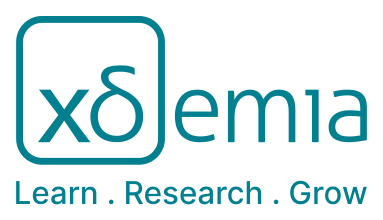Communication Network Architecture and Protocols
8 Enrollments Level : BasicRelevance
Modern digital communication relies on structured and efficient network systems. Understanding network architecture and pro-tocols is fundamental to designing, managing, and troubleshooting data communication systems in both local and global con-texts. This module introduces learners to the basic structure of computer networks, including how data is transmitted, how de-vices are identified and connected, and how information travels reliably and securely across different systems.
The study begins with the classification of network types (PAN, LAN, MAN, WAN), followed by a layered approach to communica-tion protocols, with emphasis on the ISO/OSI model and the TCP/IP suite. These models provide a framework for understanding the flow of data, from physical transmission to application-level services. Learners explore devices such as routers, switches, and access points, along with transmission media including copper cables, fiber optics, and wireless technologies.
By acquiring these foundational concepts, students will be prepared to engage with more complex topics such as cybersecurity, IoT integration, and cloud-based infrastructure. Additionally, the knowledge gained in this module is directly applicable to the design and maintenance of smart home systems, industrial networks, and enterprise IT environments.
Abstract
This module introduces the fundamental principles of network architecture and communication protocols, providing students with the essential knowledge to understand, analyze, and operate computer networks. The course begins by exploring the differ-ent types of networks—Personal Area Networks (PAN), Local Area Networks (LAN), Metropolitan Area Networks (MAN), and Wide Area Networks (WAN)—with a focus on their scope, technologies, and applications.
Students will become familiar with the ISO/OSI reference model and the TCP/IP protocol suite, learning how data moves through the various layers, from the physical transmission medium to the application level. Key concepts include addressing schemes (MAC and IP), data encapsulation, routing, switching, and session management. The role of essential network devices—such as routers, switches, and access points—is discussed alongside transmission media like copper cabling, fiber optics, and wireless technologies (Wi-Fi, Bluetooth, cellular).
Hands-on activities and scenario-based exercises help students identify network configurations, recognize typical network de-vices in real environments, and understand the flow of data within interconnected systems. By completing this module, learners will be able to describe and troubleshoot basic network infrastructures and will be well-prepared to progress toward more ad-vanced topics in networking, cybersecurity, and intelligent systems.
Learning Outcomes
Upon successful completion of this module, learners will be able to:
1. Identify and describe different types of computer networks (PAN, LAN, MAN, WAN) and their typical applications.
2. Explain the structure and purpose of layered communication models, including the ISO/OSI model and the TCP/IP protocol suite.
3. Recognize the main functions of each layer in the ISO/OSI model, from the physical transmission of bits to the application-level data handling.
4. Distinguish between MAC addresses and IP addresses, and understand their roles in device identification and data routing.
5. Describe the function and operation of key network devices such as routers, switches, and access points.
6. Classify different types of transmission media (copper, fiber optic, wireless) and evaluate their characteristics in terms of speed, reliability, and range.
7. Interpret network diagrams and configurations in common residential, educational, or small enterprise environ-ments.
8. Relate network concepts to real-world applications, including smart homes, IoT systems, and local IT infrastruc-tures.
Prior Knowledge
Learners are expected to have the following prior knowledge and competencies before starting this module:
1. Basic understanding of digital systems and binary logic, including bits, bytes, and the concept of data representa-tion.
2. Familiarity with the general structure and function of a computer, including hardware components such as the CPU, RAM, storage devices, and input/output units.
3. Awareness of operating systems and software, including the role of network-related settings in desktop or mobile environments.
4. Experience using a computer in a connected environment, such as browsing the web, accessing shared files, or using cloud-based applications.
Keywords
- Network Architecture
- Communication Protocols
- ISO OSI Model
- TCP IP
- LAN PAN MAN WAN
- MAC Address
- IP Address
- Routing and Switching
- Network Devices
- Transmission Media
- Wireless Communication
- Ethernet Wi Fi Bluetooth
Elements
1. About this Building Block
Descriptor
Description of the Building Block.
2. Exercises
Prerequisite Assessment
Prerequisite Assessment Exercise
3. Reader
Reader
Reader of BB
4. Self-assessments
Self-Assessment Exercises
Self-Assessment Exercises
